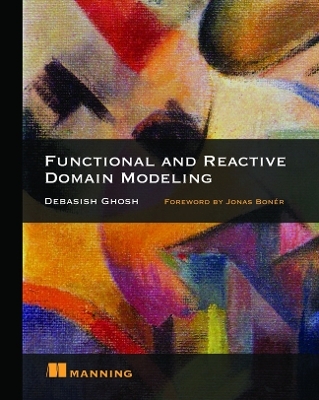
Function and Reactive Domain Modeling
Seiten
2016
Manning Publications (Verlag)
978-1-61729-224-8 (ISBN)
Manning Publications (Verlag)
978-1-61729-224-8 (ISBN)
Functional and Reactive Domain Modeling teaches you how to think of the domain model in terms of pure functions and how to compose them to build larger abstractions.
Domain modeling is a technique for creating a conceptual map of a problem space such as a business system or a scientific application, so that developers can write the software more efficiently. Reactive application design, which uses functional programming principles along with asynchronous non-blocking communication, promises to be a potent pattern for developing performant systems that are relatively easy to manage, maintain, and evolve.
Typically such models are called "reactive" because they are more responsive both to user requests and to system loads.
Functional and Reactive Domain Modeling teaches readers how to think of the domain model in terms of pure functions and how to compose them to build larger abstractions.
It begins with the basics of functional programming and gradually progresses to the advanced concepts and patterns needed to implement complex domain models. The book demonstrates how advanced FP patterns like algebraic data types, typeclass based design, and isolation of side-effects can make models compose for readability and verifiability.
On the subject of reactive modeling, the book focuses on higher order concurrency patterns like actors and futures. It uses the Akka framework as the reference implementation and demonstrates how advanced architectural patterns like event sourcing and CQRS can be put to great use in implementing scalable models. It offers techniques that are radically different from the standard RDBMS based applications that are based on mutation of records.
It also shares important patterns like using asynchronous messaging for interaction based on non blocking concurrency and model persistence, which delivers the speed of inmemory processing along with suitable guarantees of reliability.
* Illustrates idioms and best practices
* Starts with Functional Programming basics
* Progresses to advanced concepts and patterns
* Offers radically different techniques from the standard
Written for developers and architects comfortable with the basic ideas of functional programming and traditional domain modeling. No prior exposure to Akka or reactive application design is expected.
Domain modeling is a technique for creating a conceptual map of a problem space such as a business system or a scientific application, so that developers can write the software more efficiently. Reactive application design, which uses functional programming principles along with asynchronous non-blocking communication, promises to be a potent pattern for developing performant systems that are relatively easy to manage, maintain, and evolve.
Typically such models are called "reactive" because they are more responsive both to user requests and to system loads.
Functional and Reactive Domain Modeling teaches readers how to think of the domain model in terms of pure functions and how to compose them to build larger abstractions.
It begins with the basics of functional programming and gradually progresses to the advanced concepts and patterns needed to implement complex domain models. The book demonstrates how advanced FP patterns like algebraic data types, typeclass based design, and isolation of side-effects can make models compose for readability and verifiability.
On the subject of reactive modeling, the book focuses on higher order concurrency patterns like actors and futures. It uses the Akka framework as the reference implementation and demonstrates how advanced architectural patterns like event sourcing and CQRS can be put to great use in implementing scalable models. It offers techniques that are radically different from the standard RDBMS based applications that are based on mutation of records.
It also shares important patterns like using asynchronous messaging for interaction based on non blocking concurrency and model persistence, which delivers the speed of inmemory processing along with suitable guarantees of reliability.
* Illustrates idioms and best practices
* Starts with Functional Programming basics
* Progresses to advanced concepts and patterns
* Offers radically different techniques from the standard
Written for developers and architects comfortable with the basic ideas of functional programming and traditional domain modeling. No prior exposure to Akka or reactive application design is expected.
Debasish Ghosh is a software architect with extensive experience in domain modeling. Debasish uses Scala and Akka in his daily work and was one of the earliest adopters of event sourcing using EventSourced, now called Akka Persistence. He's the author of DSLs in Action, published by Manning in 2010.
| Erscheint lt. Verlag | 31.10.2016 |
|---|---|
| Verlagsort | New York |
| Sprache | englisch |
| Maße | 185 x 231 mm |
| Gewicht | 544 g |
| Einbandart | kartoniert |
| Themenwelt | Informatik ► Software Entwicklung ► Software Architektur |
| Schlagworte | Funktionelles Programmieren • Software Architektur • Softwareentwicklung |
| ISBN-10 | 1-61729-224-9 / 1617292249 |
| ISBN-13 | 978-1-61729-224-8 / 9781617292248 |
| Zustand | Neuware |
| Haben Sie eine Frage zum Produkt? |
Mehr entdecken
aus dem Bereich
aus dem Bereich
Buch | Hardcover (2012)
Westermann Schulbuchverlag
CHF 44,90
Schulbuch Klassen 7/8 (G9)
Buch | Hardcover (2015)
Klett (Verlag)
CHF 29,90
Buch | Softcover (2004)
Cornelsen Verlag
CHF 23,90


